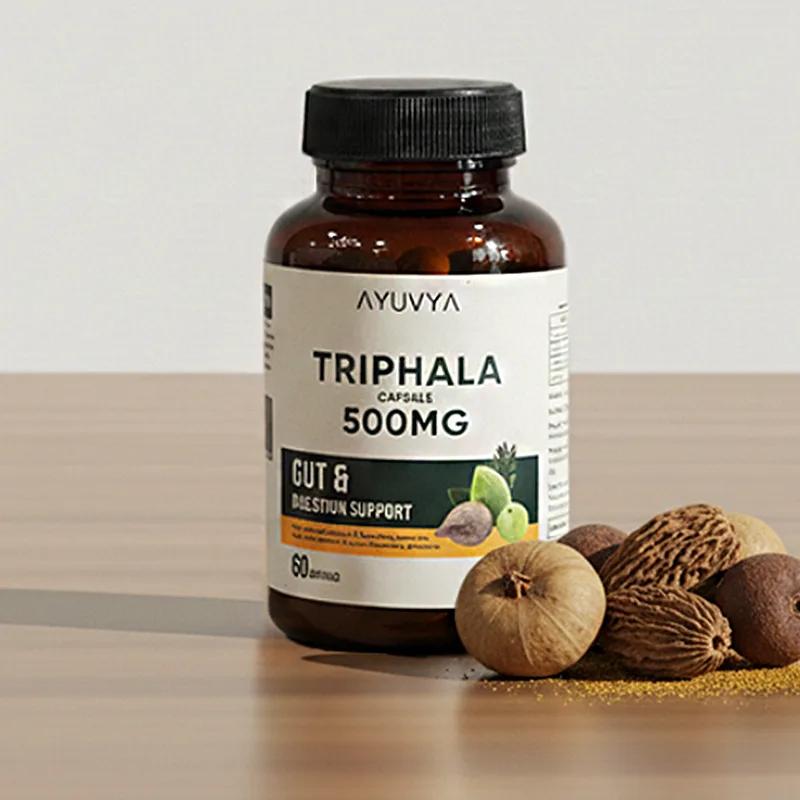Ayurvedic Secret For Better Vision
May 09, 2024

Are you struggling to recognize faces across the room, or find yourself clashing into objects more than usual? This can be a sign of low vision, a condition affecting millions of people across the world.
Table of Contents:
- What are the Ayurvedic remedies for a better vision?
- What are the causes of low vision?
- Conclusion
- FAQs
In today's technology-dependent world, vision problems are common and also a matter of concern. A study from the National Library of Medicine in India stated that around 35 million people are visually impaired. Increasing screen time, an active lifestyle, improper sleep, and environmental factors all contribute to dryness of the eye, straining, and redness leading to visual problems.
What are the causes of low vision?
Low vision can be caused by several factors such as:
Diseases: These can be conditions that develop after birth and can affect your vision. Some of the diseases causing low eye vision are as follows:
Age-related macular degeneration (AMD): This damages the central vision, leading to blurry central vision or a blind spot.
Cataracts: It means clouding of the eye's lens, causing blurry or dimmed vision.
Glaucoma: It damages the optic nerve, affecting peripheral vision and potentially leading to tunnel vision.
Diabetic retinopathy: It is a complication of diabetes that damages blood vessels in the retina, leading to vision loss.
Injuries: Physical injuries to the eye can cause permanent vision impairment. This includes direct injuries or those caused by head injuries, that directly impact the brain areas responsible for vision.
Nutritional deficiencies: The eye requires certain nutrients for its development. The lack of Vitamin A causes Night Blindness.
Congenital conditions: These conditions are present at birth & can affect eye development & functions.
What are the Ayurvedic remedies for a better vision?
Ayurveda has always emphasized on maintaining balance in the dosha for good health and well-being. Therefore, each individual should give preference to holistic living to prevent disruption of doshas equilibrium, as according to Ayurvedic principles any disease is caused by the imbalance in Doshas. Let's see how Ayurveda is better for your vision.
Triphala prakshalana
Prakshalana is a term used for washing. Triphala is a combination of three herbs i.e. amla, haritki, and Vibhitaki, each known for its antioxidant and anti-inflammatory properties. Triphala not only helps to soothe your eyes but also helps to improve vision.
Application of ghee
Dryness in the eye can irritate, the use of pure ghee before bedtime or in the morning can help to promote moisture retention.
Trataka kriya
Excessive screen time or exposure to UV radiation can exhaust our eyes. For this one should practice Trataka kriya. In this process, a person has to focus on the black dot or burning flame of a candle till the eyes get watery. This practice not only helps to calm your mind but also helps to clean and relax your eyes.
Herbal formulations
Consumption of herbs like Punarnava, Haritaki, and Amla not only helps to improve the blood circulation towards your eyes and improves your vision but also reduces the intraocular pressure which is the main cause of glaucoma.
Amla
Amla is rich in antioxidants and vitamin C. Daily consumption of fresh amla fruit or juice can promote healthy vision and prevent age-related eye problems.
Eye exercise
Practicing regular eye exercises in one's daily routine helps to maintain eye vision and strengthens the eye muscles.
Here are a few of the simple eye exercises which you can practice anytime and anywhere-
Rub your palm & gently place them on your eyes, repeat it 2 to 3 times. It will help relax your eyes after a long screen time or an exhausting day.
Roll your eyes slowly in a clockwise direction followed by anticlockwise. Repeat it twice. It will help to strengthen your orbital muscles.
Blink your eyes rapidly, blinking your eyes rapidly will help you to moisten your eye surface.
Imagine an Infinity figure or 8 figure in front of you and trace it with your eye moment. It will help to strengthen your eye muscles.
Conclusion:
Adding these ayurvedic remedies into your daily routine helps to restore your body balance and support healthy vision. Ayurveda always emphasizes treating the problem by addressing the potential root cause. A healthy lifestyle, proper diet, and guidance from a good physician will help to prevent and reduce common vision issues. It allows individuals to achieve healthy eyesight for their upcoming years of life and prevents premature aging of the eyes. One should opt for Ayurveda for better vision and healthy eyes.
Frequently Asked Questions
There are many resources available to help people with low vision live fulfilling lives. Joining support groups, learning new skills to manage daily tasks, and staying informed about advancements in vision rehabilitation can all be beneficial.
There is no cure for low vision, but It can be controlled by following various Ayurvedic home remedies such as using Triphala prakshalana, applying ghee, or incorporating certain fruits and vegetables in your daily diet like Amla and doing regular eye exercises.
Symptoms can change depending on the cause but may include:
- Blurred vision, near or farsightedness not corrected by glasses
- Difficulty in reading or seeing details.
- Reduced peripheral (side) vision.
- Seeing spots or flashes of light.
- Difficulty adjusting to changes in light levels.
There are several factors such as age-related macular degeneration, cataracts, glaucoma, and diabetic retinopathy are the leading causes of low vision. Other factors include injuries, infections, and congenital conditions.
Low vision is a permanent decrease in vision that cannot be fully corrected with glasses, contact lenses, or surgery. Blindness, on the other hand, refers to a complete or near-complete loss of vision, often defined legally as visual acuity of 20/200 or less in the better eye or a very limited field of vision.











